This article is also available in Ukrainian and Russian.
We cannot escape the bitter reality, and frankly, it is now nearly impossible to focus or even think about anything else. There is a war in Europe, a few hundred miles from our factory. Not a “special operation”, but a full-scale, unjust war started by Russia against its neighbor, with intentional targeting of the civilian population.
Many Ukrainian people live and work here in Prague (including several colleagues right in our company), each and every Czech citizen probably has at least one friend from Ukraine, and I am no exception. We really don’t think twice about helping – this is close and personal. Besides other things, we have some company premises that are normally used for recreational and teambuilding purposes, these are now dedicated solely to refugees. So far we have accommodated approximately 60 people. Apart from the housing, we help with all the necessary paperwork, finding jobs, applying for schools, and pastime activities for children, in short, living a life as normal as possible in the current circumstances.
Of course, from day one I’ve been also thinking about what we can do specifically as members of a 3D printing community. We have gathered some ideas, which you can find below. However, before we continue, one important thing must be said. These suggestions are intended mainly for people who are already in Ukraine or have a reliable way of delivering the printed equipment to the proper hands – which is definitely not trivial now. We are not able to organize any collections ourselves.
To be honest, for the vast majority of us, the most feasible way of helping Ukraine now is simply donating money. There are many non-profit organizations, if you are not sure which one to choose, your best bet is to contact the Ukrainian Embassy in your country (or check their website). Either they will have their own dedicated account or will redirect you as needed. Thank you for understanding!
So, without further ado, let’s see what we have come up with so far.
Medical prints
Similar to the face shields, we want to focus rather on simple, straightforward prints that are inexpensive and easy enough to be produced in larger quantities, and therefore have an actual practical impact.
The first design we would like to present is called a tourniquet, it helps to quickly constrict blood flow in limbs and stop bleeding caused mainly by bullet wounds. Make sure you check out both the article and the GitHub instructions linked in the model description. While it is not certified yet, it has been widely used in field conditions in the Gaza Strip since 2018. Note that parts of this tool (both the buckles and the “corkscrew” handle) must withstand substantial mechanical stress. PLA is really too brittle for that and the splinters can be outright dangerous. In this case, functional materials are a must, with no exceptions. Something like nylon or PC Blend would be ideal, realistically, at least PETG will have to do.
While there are other tourniquet designs in development (and reportedly even in practical use in Ukraine), until we get more feedback, we will keep recommending something that is tried and proven, respecting the opinion of the author himself.
Another design that has already seen widespread use is this humeral brace (splint) developed by Make 3D Company Ltd. led by Silvestr Tkáč, a Czech entrepreneur operating in The Gambia. In this country, the humeral brace became the first 3D printed piece of equipment with a medical certification.
As with most other prosthetics, it is very important that the brace is easily adapted to individual size and shape. In this case, it is printed flat and then bent into a correct shape using a heat gun, a hairdryer, or simply just hot water. Unlike with the tourniquets, PLA is acceptable material here, among other reasons, there is a wider temperature range where the material is already malleable enough, but still not too hot to hurt the patient.
Inspired by this design, we have prepared a whole set of similar makeshift braces for various bones and joints. Currently, there are 7 of them and we keep developing more.
Again, please make sure you read the instructions in the description of each model. They are available also in Ukrainian and Russian language.
Of course, we are well aware that any uncertified or even untested medical equipment could be hazardous and do more harm than good. As we have already learned during the Covid-19 crisis, prior to promoting any design, we run it by experienced medical professionals first. We strongly recommend you do the same before publishing any medical print on PrusaPrinters. Throughout the whole development process, which lasted about 3 weeks, we consulted our designs with Doc. MUDr. Milan Krticka, Ph.D. and MUDr. Martin Chovanec of the trauma surgery clinic in Brno, Czech Republic.
Please keep in mind that all the designs mentioned above were made with the best intentions and according to the feedback we have currently available – everything can (and probably will) change and be updated or improved over time!
Non-medical prints
As you can see above, we decided to focus mainly on medical and humanitarian use and not to publish and popularize any 3D prints with a direct military purpose, given the huge risk of abuse or fueling further misinterpretation by the tabloid media.
Of course, there are many printable designs usable to some extent both for peaceful and not-so-peaceful purposes, like flying drone parts. As for the less obvious examples, we have picked this periscope by SYGNIS SA which can at least partially increase the safety of civilians in the warzone (i.e., looking behind the corner or out of the window before you go). Apart from the 3D printed parts, you only need a pipe and a couple of mirrors and rubber bands.
Also, there are these knee guards for protection when quickly kneeling, taking cover, or simply stumbling in the rubble.
Supporting makers in Ukraine
The 3D printing community in Ukraine, even if not located directly in the warzone, struggles with power shortages and a lack of both filament material and reliable printer machines. Prior to the war, we sent a total of about 100 Original Prusa printers to Ukraine. However, only a fraction of them is now available where they are most needed.
We already cooperate with multiple companies and volunteer groups and try to donate as much hardware and material as possible, but as already mentioned above, means of reliable transport to Ukraine are now extremely limited. So far we managed to get through another 15 printers and about 300 kilograms of filament. For obvious reasons, the identity and location of the recipients, and the exact purpose of their printers, now remain confidential.
However, if you are currently in Ukraine and want to coordinate further possible help, please do not hesitate to contact us!
By the way, the Original Prusa i3 MK3S+ handbook is now translated into the Ukrainian language as well.
The president is here!
Last but not least, to brighten the mood a bit, we prepared a bust of the badass Ukrainian president, Volodymyr Zelenskyy, complete with his famous quote “prezident tut” (the president is here) on the pedestal.
Even though he had a quick and easy option of a foreign exile, Volodymyr Zelenskyy decided to stand his ground and lead the country right from the capital city of Kyiv. I think he gives such a big morale boost not only to people in Ukraine but also to us worldwide.
That’s all for now, but we will definitely post another follow-up as soon as we have any further important information to share. More than ever before, we would like to ask for your ideas and suggestions, especially with a focus on any medical and humanitarian applications. Together we can save lives.
Слава Україні!






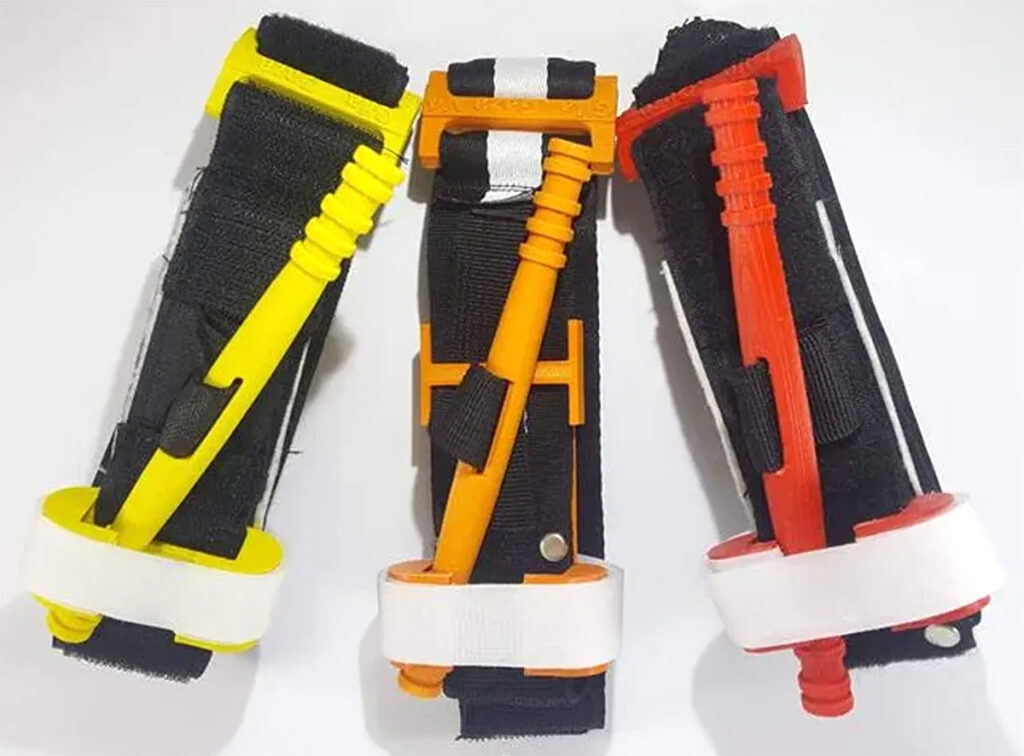

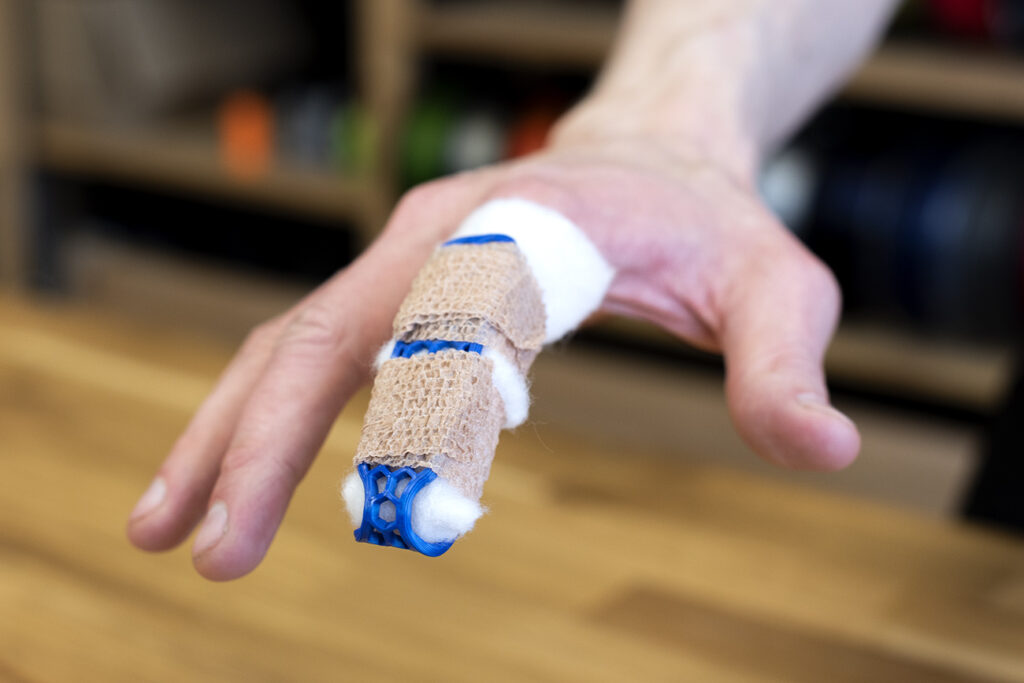
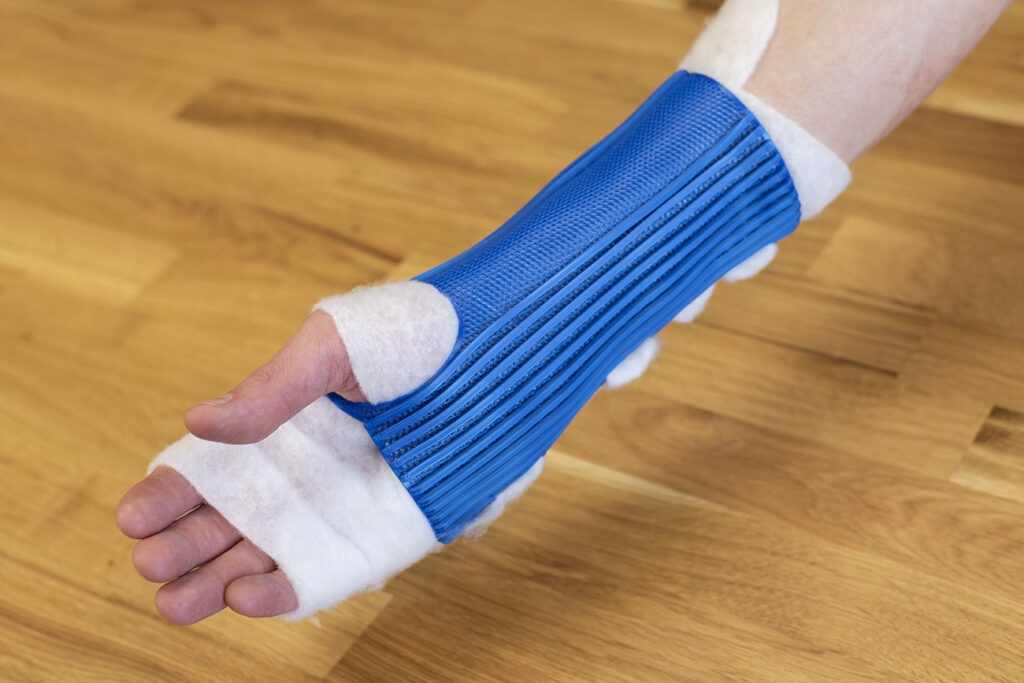
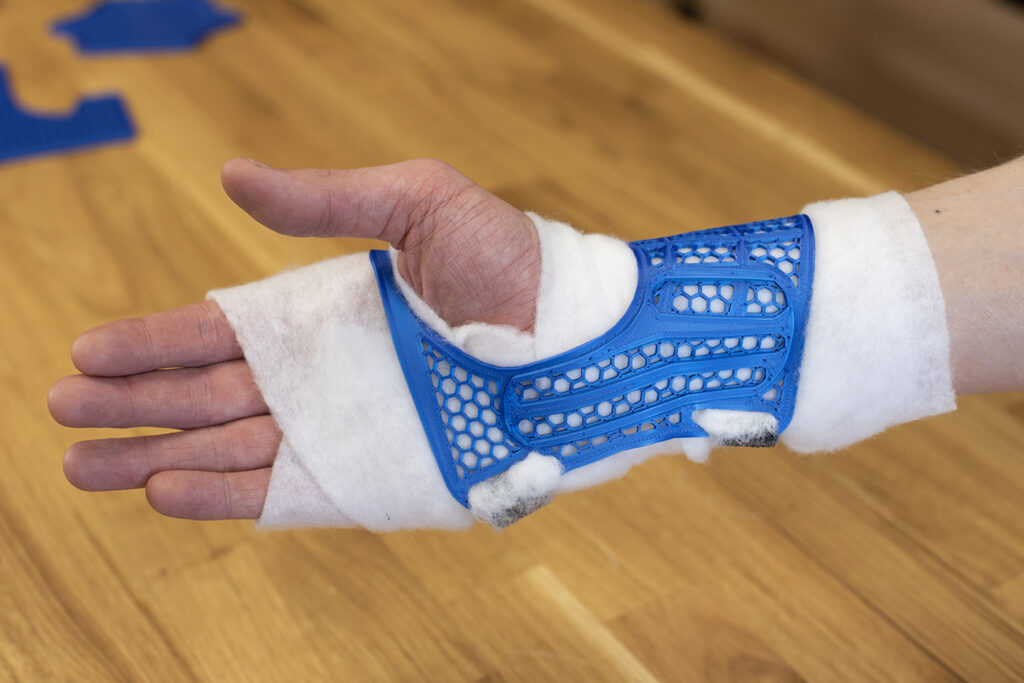

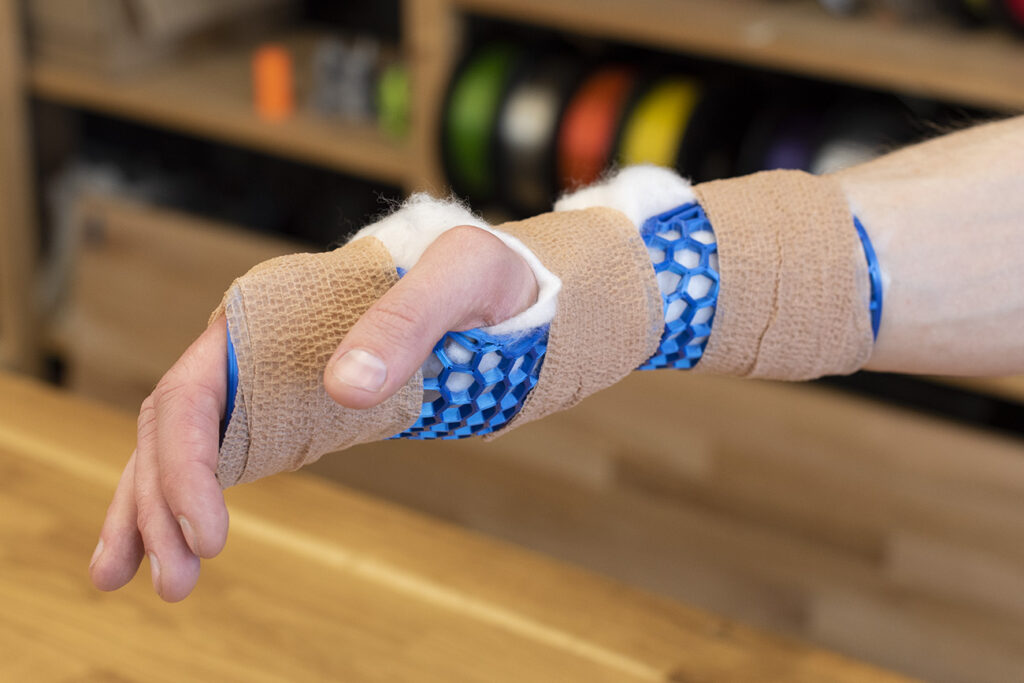

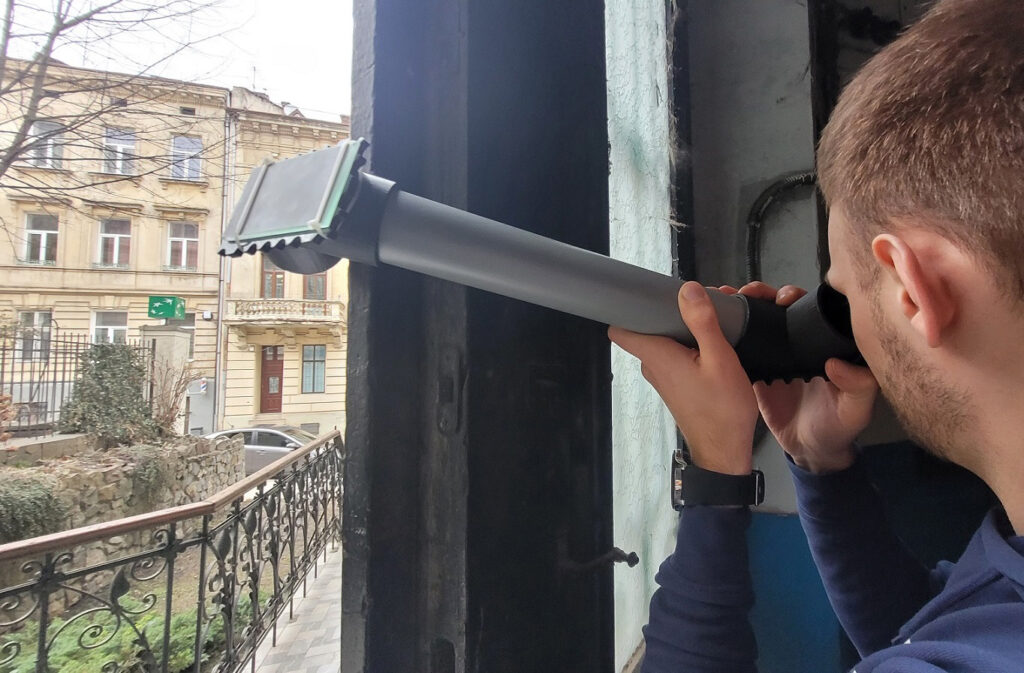
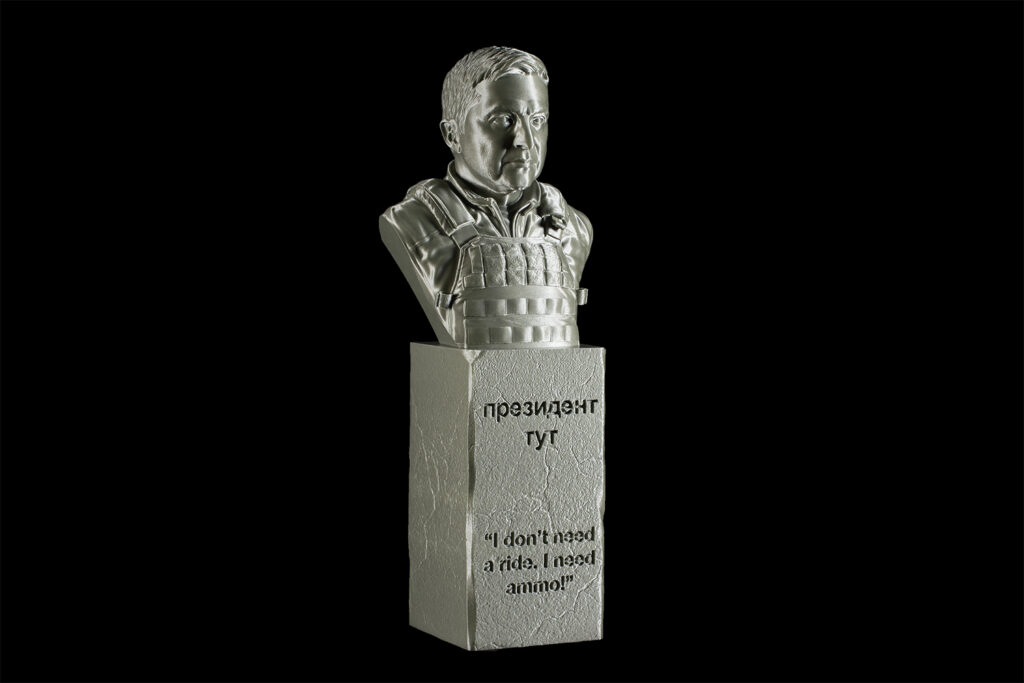
Excellent initiative, so happy to see you doing this extremely relevant and positive work!
We need to open source a drone.
Prusabaktar?
Regarding the tourniquet we are a group printing parts in cooperation with Glia.
Interested to read more:
https://makershelp.org/
But you only print the T-clip right? The rest is injection molded now.
I am printing for makers4all from the netherlands and I have gotten the instructions to only print the base part
Yes that’s correct, clip only and in petg
There is also another way to help using your 3D printer. If you live in a country where the refugees are coming (like here in Poland), there will be many kids who had to leave their whole world behind. And kids are still kids – they need some distractions, need something to play with, need some reason to smile and some reason not to think about the war. There are hundreds of cool and easy to print toys on PrusaPrinter. Puzzles, figurines, cars, etc. Print them with bright colors, pack them nicely and find a refugee family or an orphanage that was forced to flee the country – they will appreciate them!
Brilliant! Contact your local embassies for the host countries, I’m sure they will help get them to the kiddos.
I want to help, but i cant find where i’m supposed to send the prints. Or do i have to figure that out myself?
Hi,
I’m afraid you do need to figure that out by yourself.
What are you printing?
I’m in Ukraine now, and could contact you with volunteers who support hospitals and army.
That sounds good. I havent decided yet. Im guessing whatever you say they need.
How can i contact you privately?
You could consider joining the Drukarmy!
https://app.drukarmy.org.ua/
Not to p**s on your parade or anything, but Chech Republic is effectively sponsoring Putin’s war with energy bills so how about you guys just don’t print s**t the Ukrainians know very well how to make themselves with materials they have access to? I mean, I know that virtue signaling is awesome and all, but if you’re trying to actually help, maybe help the guys who need helping, not the Russian federation? Just a thought.
It’s certainly good that you care about blocking this d***head’s business in every possible way… but let’s check some facts, ok? As far as I’ve checked[1], Czech Republic gets around 50% of its electric energy from coal. The rest comes mainly from nuclear power plants and renewable sources. Out of that 50%, most of the energy is produced from burning lignite, which is mined directly in the Czech Republic. Although they do import some hard coal, the amount is insignificant in the total sum (and especially when you take into consideration the total cost of the electricity needed for those prints). Sorry, but it looks like your argument is just utterly wrong – no one in the Czech Republic is sponsoring Putin by printing stuff for Ukrainians, and you can help a lot with those prints.
You want to do something to stop sponsoring his war? Use your bike more instead of your car – which is probably fueled by Russian oil.
[1] https://euracoal.eu/info/country-profiles/czech-republic/
I am Ukrainian, I am literally taking every little thing personally today, I’m volunteering every weekend and almost every day after the university, doing everything I can to make my little contribution to the situation, participating in demonstrations to call the government of the country I’m studying in to cut all possible ties with russia, luckily there ain’t many, but I still can’t agree with your comment. The Czech Republic is one of the most helping and understanding countries for Ukraine as of today and the Czech people are also very close to Ukrainians spiritually, just like Poland and Lithuania, and the fact that even privately owned businesses like Prusa are helping Ukraine like this just warms my heart. I don’t think that Joseph Prusa has to do anything with the country’s economics
I have only been printing for a few months and only on a resin printer. I would really like to help. Can someone give me some suggestions on what would be best to print?
Check https://app.drukarmy.org.ua/
You will find what's needed the most there.
If we could help printing drone parts for the Aerorozvidka and send them to somewhere…
Great idea! I love the periscope. Where I can find one? https://cupcake-2048.com
Hi there, we are trying to start producing drones (here in Ukraine) with camera to help our volunteers search for those civilians under blockages in “hot” locations and to help with securing evacuation for them and volunteers themselves. For now we have a need in PETG (at least 10kg) and PLA (5kg) plastics and would be great if we can widen our production with 1 more printer if there’s possibility, cause there’re local needs in producing DIY tourniquets from time to time. Is there a possibility for donations like this? If u can help pls contact us!
P.S. Also would be great if u can guide us how it is with delivery nowadays if possible. Thx
P.S.S. Also if u need to see renders of drone we gonna build, contact us via e-mail: [email protected]
I would suggest you get in touch with this group. It is difficult to get shipments into Ukraine but there are alternate channels.
I would gladly help and support you but can’t send anything directly.
To date I have sent around 400 tourniquet parts to Ukraine via different initiatives and continue to print 24/7 as long as it’s needed.
https://3dprintingforukraine.com/print/
Thank you. Main problem is in low stock of filaments in local stores, we have one printer and a couple of bobbins with PETG in stock, it’ll be enough for 1 month or less; our main goal is to start producing drones, so we focus on that rn; about tourniquets or other prints for volunteers it’s just a way we can use our printers while they’re idle and while we work on non-printable drone parts and drones in general. Our request to Prusa Research based on idea of possible help with filaments mainly, if it’s possible with +1 printer to upscale production and research. About delivery we’re definitely gonna solve all problems as production isn’t possible without it; if anyone can help with that contact us please.
P.S. If there’s possibility to send tourniquets too so delivery will be more efficient, we’ll try to help with delivering them to local volunteers in need.
A clarification, I would be happy to donate both material and help you print drone parts but you need to have a secure way of getting the parts to you. And don’t use the same shipping adress as where you produce the parts for obvious reasons.
That’s why I suggested you contact that group. Theres already logistic solutions in place and perhaps your initiative can take advantage of that .
Got it. Thank you for clarification, we’ll try to figure that out in the coming days and contact you if there’ll be any progress. If it’ll be comfortable enough i can write back in here, other way reach me via e-mail so we’ll be in touch. Thanks for reply!
An article about the war in Ukraine sheds light on the urgent need for advanced technology in conflict zones. For those interested in improving their tactical capabilities, I highly recommend taking a look at thermal clips, available at <a href="https://www.agmglobalvision.com/thermal-imaging/thermal-clip-on-systems">www.agmglobalvision.com/thermal-imaging/thermal-clip-on-systems</a>. These devices provide superior visibility in low light conditions, offering a decisive advantage in difficult conditions. Their cutting-edge technology can make a significant difference to professionals working in high-stakes situations.
An article about the war in Ukraine sheds light on the urgent need for advanced technology in conflict zones. For those interested in improving their tactical capabilities, I highly recommend taking a look at thermal clips, available at www.agmglobalvision.com/thermal-imaging/thermal-clip-on-systems. These devices provide superior visibility in low light conditions, offering a decisive advantage in difficult conditions. Their cutting-edge technology can make a significant difference to professionals working in high-stakes situations.
An article about the war in Ukraine sheds light on the urgent need for advanced technology in conflict zones. For those interested in improving their tactical capabilities, I highly recommend taking a look at thermal clips, available at https://www.agmglobalvision.com/thermal-imaging/thermal-clip-on-systems. These devices provide superior visibility in low light conditions, offering a decisive advantage in difficult conditions. Their cutting-edge technology can make a significant difference to professionals working in high-stakes situations.
For anyone willing to support the Ukraine with your 3D printer(s), check out:
https://app.drukarmy.org.ua/inv/4b48kzky
They are still looking for support big time…